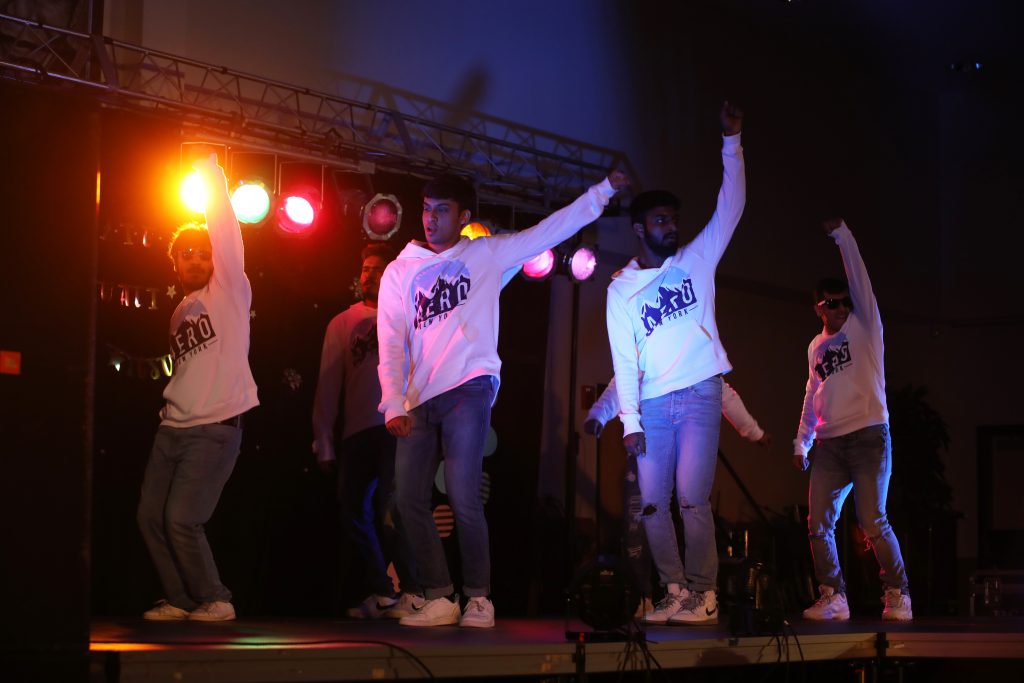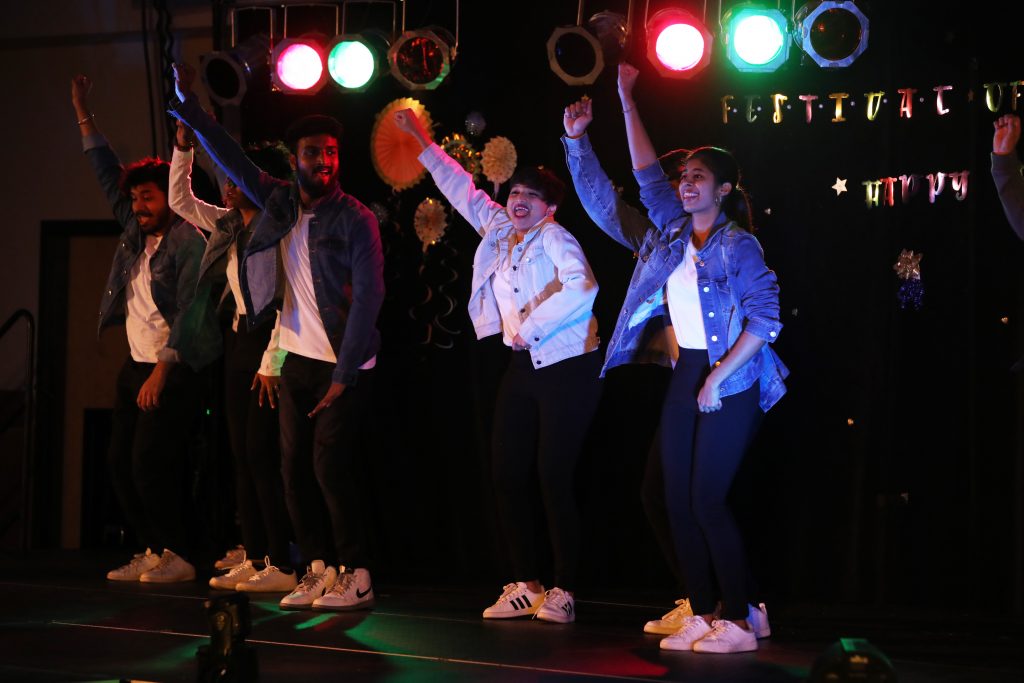
Diwali 2K19, the 12th-annual Festival of Lights event sponsored by the Indian Graduate Students Organization (IGSO), lit up the University Union’s Mandela Room on Sunday afternoon and evening with more than two hours of upbeat rhythmic music and dance by an ever-changing cast of performers.
Diwali is a holiday that celebrates the triumph of good over evil, traditionally celebrated by Hindus, Jains and Sikhs in India.
Sunday’s full-capacity crowd was estimated at 450 by Bharath Reddy, one of the event’s organizers, vice president of the IGSO and a second-year graduate student studying systems science and industrial engineering.
“We always have a sold-out event every year,” Reddy said.
Reddy said the historic roots of the festival are found in the Indian epic “Ramayana,” dated thousands of years B.C.
“People would celebrate by getting together with their inner family circle, wear[ing] new clothes and celebrat[ing] by bursting firecrackers,” Reddy said. “This year, however, people in India have scaled back on the traditional use of firecrackers due to a heightened awareness of climate change.”
The celebration started with a lamp-lighting ceremony, followed by a traditional Indian dance performance called Kathak. Several honored guests were introduced and spoke briefly, including Upinder Dhillon, dean of Binghamton University’s School of Management, Eric Krohn, director of business incubation at the Koffman Southern Tier Incubator, Mohammad Khasawneh, chair and professor of systems science and industrial engineering and Nagendra Nagarur, a professor of systems science and industrial engineering.
Each related their own experience with good triumphing over evil, as well as their reflections on, or appreciation of, Indian culture.
Krohn spoke about the mission of the Incubator and its relevance to the celebration of Diwali.
“The University built the Incubator to encourage startups,” Krohn said. “We look for darkness, pain and what we can do about it.”
Khasawneh spoke of his connection to India and Indian culture.
“I’m from Georgia,” Khasawneh said. “I go back to Georgia once a year, but to India I go five times a year.”
The stage was then turned over to the many entertainers lined up to perform. Solo dancers and group dancers took the stage for a few minutes each, often in uniform or festive, colorful clothing.
Vinay Reddy, a second-year graduate student studying computer science, held auditions recently and choreographed all of the group dances. Reddy said all of his dancing and choreography skills are self-taught.
“I learned to dance on YouTube,” Reddy said.
After the last dance performance, a seven-piece band performed a variety of music from both Indian and American culture, while a parade of lead vocalists lined up and took turns fronting the band.
The music for dancing and vocals spanned many genres, both Indian and American, including traditional, pop, alternative, deep house and rap.
Among the U.S. chartbusters were tunes such as Michael Jackson’s “Billie Jean” and Radiohead’s “Creep.”
Many of those attending wore brightly colored Indian clothing, with yellow being the most popular color, especially among men at the celebration.
After the band closed with a rendition of “I’ll Be There for You,” originally by The Rembrandts, the attendees entered the adjoining dining room, where a buffet of hot food catered by Moghul Fine Indian Cuisine awaited them.



